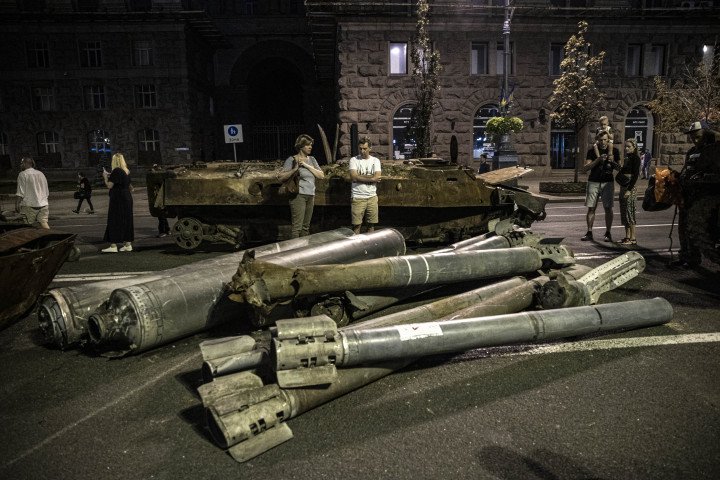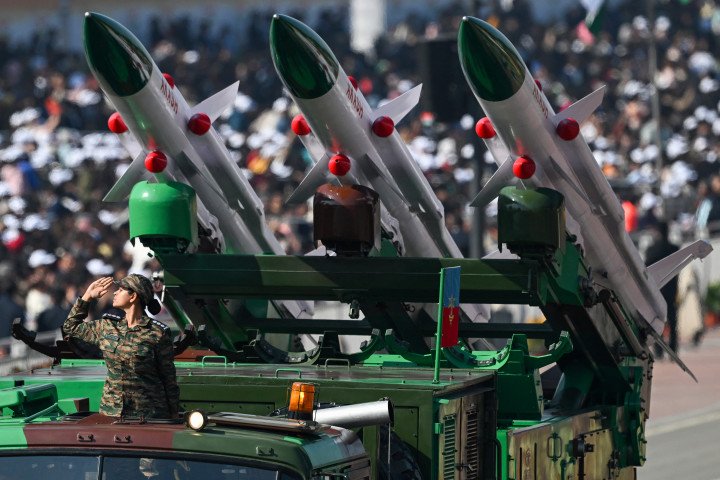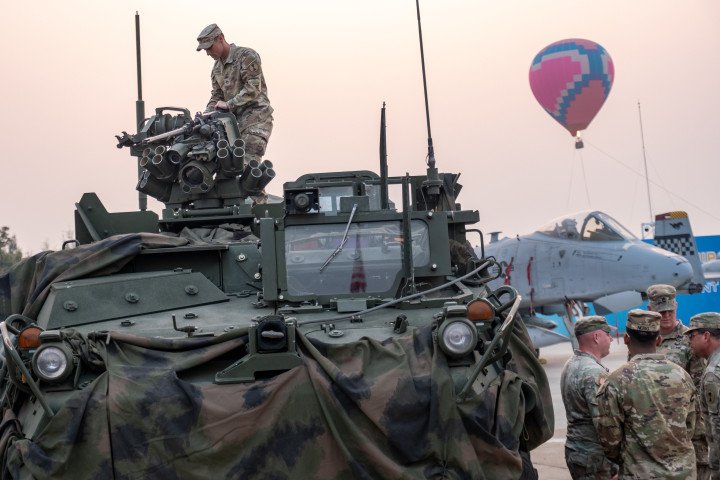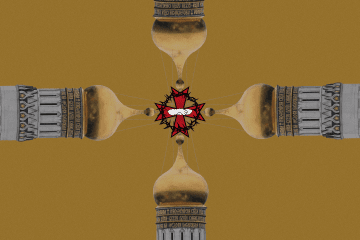Russia’s global arms reputation is dramatically fading. Russia’s invasion of Ukraine has exposed vulnerabilities and critical flaws in its military equipment, forcing its traditional partners to move westward.
“While 65-70% of defence equipment was imported a decade ago, today almost the same percentage of weapons/platforms are being manufactured on Indian soil,” Defence Minister Rajnath Singh said at Aero India 2025.
Historically, India, the fourth largest military spender, was a significant buyer of Russian arms. However, the country has drastically reduced its purchases from Moscow.
Between 2009 and 2013, over 70% of India’s arms imports came from Russia. By 2019–2023, that figure had dropped to just 36%, according to the Stockholm International Peace Research Institute (SIPRI).
Russia has historically asserted itself as a global power through arms trade, which was its second export earner, after energy. However, its “dominance” in arms exports has drastically collapsed, with a 92% drop from $14.6 billion in 2021 to under $1 billion in 2024.
Russia’s full-scale invasion of Ukraine exposed critical flaws in its equipment and forced a realignment of global defense partnerships. In 2019, Russia had 31 active weapons buyers. By 2024, that number had fallen to just 12, as nations pivot to more advanced Western systems and reliable suppliers.

Russia’s battlefield losses are shattering its military reputation
Since launching its full-scale invasion of Ukraine, Russia’s military hardware’s vulnerability has been exposed. Tactical failures and repeated losses on the battlefield have shattered the Kremlin’s long-cultivated image of military strength.
Ukrainian forces have destroyed some of Russia’s most expensive and hard-to-replace systems with both Western-supplied weapons and domestically produced low- and mid-cost drones. By January 2025, Russia’s equipment losses had surpassed 20,000 units—an unprecedented blow to its defense industry and global credibility.
As of October 2024, Ukrainian Forces destroyed 982 Russian anti-aircraft warfare systems and nearly 30 of its 80 Black Sea Fleet vessels, with 15 more out of action and undergoing repairs due to serious damage. By February 2024, Ukraine reported downing a total of 342 Russian planes and 325 helicopters.
The Kremlin is plagued with military, domestic, and diplomatic weaknesses that it desperately tries to misrepresent and conceal.
Russia’s military prestige hasn’t just crumbled in Ukraine. Israel’s air strikes against Iran in October 2024 also “battered” the reputation of Russian military equipment.
Israel launched around 100 jet fighters, sending a barrage of missiles onto Iran, which managed to bring down “few if any” of the missiles, with its prized Russian-made S-400 and S-300 air defense systems.
Western sanctions, in response to Russia’s full-scale invasion of Ukraine, have also severely impacted Moscow’s arms industry and caused difficulties in obtaining vital components for its weapon systems.
As losses mount on the battlefield and supply chains break down, confidence in Russia’s ability to deliver arms has eroded. Former clients are now diversifying suppliers and ramping up domestic production, leaving Moscow increasingly isolated in the global arms market.
🔴 Ukrainian FPV drone takes out a Russian T-72B3 tank and an ammo dump in one precise strike. pic.twitter.com/cApAnaPdan
— UNITED24 Media (@United24media) May 19, 2025
Countries backing away from Russian weapons
India
The Indian defense sector is striding towards the “Made-in-India” initiative, modernising its domestic production, while reducing dependence on Russian equipment.
The country is working to enhance the modernization of its military systems, such as standardizing its heavy artillery to 155mm rounds, in line with most Western countries. The Defence Research and Development Organization (DRDO) is leading the initiative with the development of the 155mm Advanced Towed Artillery Gun System (ATAGS), designed to replace the aging Soviet-era 130mm M-46 guns.
India has a small drone fleet and is steering towards modernized Western-made drones. In October 2024, India made a deal with the US to buy 31 MQ-9 Reaper drones. This order would make India the largest operator of MQ-9Bs.
While India still operates Russian T-90 tanks—branded domestically as the T-90 Bhishma—these so-called prized tanks of Moscow’s armored forces have proven vulnerable in Ukraine.
In contrast, Western main battle tanks like the Leopard 2, Abrams M1, and Challenger 2 continue to outperform Russia’s T-90M, offering superior armor, firepower, and survivability.
A notable attack was a head-to-head duel with the US Bradley infantry fighting vehicle (IFV) near the occupied city of Avdiivka. The tank was damaged by the IFV and then destroyed by a Ukrainian striking drone, highlighting its weakness.
Russian Su-30 jets are also in India’s arsenal, but Russian forces faced a significant blow when two Su-30s were downed over the Black Sea by Ukraine’s naval drones using AIM-9 air-to-air missiles in May 2025. The strike marks the first documented instance of a sea drone downing manned fighter aircraft with such weaponry.
Fighter aircraft
Russia’s multi-role Sukhoi Su-30MKI fighter aircraft was considered the backbone of India’s air force. Though still in operation, the fighter aircraft will be gradually phased out of use, transitioning to the domestic AMCA Mk II. The AMCA is reported to have cutting-edge technologies, superior stealth capabilities, and advanced avionics.
In April 2025, India signed a deal with France to buy 26 Rafale fighter aircraft worth $7.4 billion for its navy. According to reports, India’s navy currently mainly uses Russian MiG-29 jets, while its air force already operates 36 Rafale fighters. The Rafale offers better avionics, multirole capability, and reliability.
Attack helicopters
Russia’s Mi-24 attack helicopter (NATO name “Hind”) “seriously lacks digitized cockpit controls, automated avionics and state-of-the-art radar capabilities”, according to the Indian Defense Network.
India has been integrating American AH-64E Apache helicopters into its arsenal. Defense reporters say that the Apache is more advanced due to modernization, and can shoot down the Hind from further away, making it superior.

Egypt
In Egypt, following the military coup and ousting of President Mohamed Morsi, the US suspended its military aid to the country, including the delivery of F-16 fighter jets.
Following the coup, Russian Military Intelligence Lt. Gen. Vyacheslav Kondrashov reportedly visited Cairo to reportedly set up dialogue between the two countries. Immediately after, Russian Defence Minister Sergei Shoigu visited the then-Egyptian Minister of Defence Abdul Fattah al-Sisi. These meetings led to a $3.5bn weapons deal in 2014, which included the delivery of 20 MiG-35 aircraft and attack helicopters.
Egypt was the third-largest arms importer from Russia in 2019, but the US threatened Cairo with sanctions should it continue to purchase arms from Russia. Egypt, Algeria, and Indonesia rejected a Su-35 fighter jets deal with Russia in 2022, amid growing sanctions.
In 2023, Russian officials asked Cairo to return more than a hundred engines from Russian helicopters that Moscow needed to wage its war in Ukraine, the Wall Street Journal reported. Moscow had also sought to take back parts it had sold to Pakistan, Belarus, and Brazil due to the helicopters it had lost to Ukraine’s forces, further highlighting Russia’s losses on the battlefield and breakdown of supply chains.
The Egyptian President kept Putin waiting today. For years, Putin was notorious for making others wait - now he no longer has such status and must wait for others pic.twitter.com/uRf1PZFdAU
— Business Ukraine mag (@Biz_Ukraine_Mag) July 27, 2023
Vietnam
Between 1961 and 1964, the Soviet Union supplied North Vietnam with over $200 million in weapons and military equipment. That figure surged to more than $910 million over the next four years. By 2021, roughly 82% of Vietnam’s military imports still came from Russia.
Vietnam has six submarines, Sukhoi Su-30MK2 multirole aircraft, Gepard 3.9 class frigates, patrol, T-90SK main battle tanks, and Bastion coastal defense missile systems.
Russia’s attempted annexation of Crimea in 2014 disrupted its defense production. Ukraine’s halt to military cooperation with Moscow, ordered by then-President Petro Poroshenko, cut off access to vital components—crippling many Russian-made systems, including those exported abroad.
The Gepard 3.9 frigate, for example, relies on Ukrainian-made gas turbines. Without them, Russia struggled to maintain or modernize the platform. Even operationally, the Gepard is seen as outdated. It lacks stealth capabilities and is equipped with only short—to medium-range air defenses, making it highly vulnerable to modern anti-ship missiles. Western and Chinese equivalents have outpaced it in both design and survivability.
Since Russia’s illegal occupation of Crimea, Bastion missile systems, which launch Onyx missiles, have been based on the peninsula. This system has been used to target Ukraine but has fallen victim to Ukraine’s counterattacks.
Since then, Vietnam has been diversifying its suppliers and reducing dependence on traditional partners, mainly Russia.
At the International Defense Expo 2024 in Hanoi, Vietnam ordered three C-130J Super Hercules transport aircraft from US defense giant Lockheed Martin. Hanoi finalized a deal to purchase at least 24 F-16 fighter jets in April 2025, also from Lockheed Martin—a move that could transform the US into Vietnam’s top defense partner.

Lockheed Martin has played a pivotal role in supporting Ukraine, providing air defense, precision-guided munitions, and artillery systems. Its growing presence in Vietnam marks a dramatic shift in Hanoi’s strategic alignment.
This could make the US Vietnam’s “most substantive defense partner,” said Ian Storey, senior fellow at Singapore’s ISEAS–Yusof Ishak Institute. It effectively signals the end of a 70-year defense partnership with Russia, moving “from playing the leading role in Vietnam’s defense policy to being a bit player”, Storey added.
By the end of 2024, the Vietnamese air force received the first batch of the 12 American Beechcraft T-6C Texan II training aircraft, which had been ordered in 2021.
As Russia turns toward pariah states like Iran and North Korea, its traditional markets are moving westward. The global shift is clear–Moscow’s dominance in defense exports is fading.
-46f6afa2f66d31ff3df8ea1a8f5524ec.jpg)
-04cd63179a6e2a0e43f529cdd0b666b2.jpg)

-29a1a43aba23f9bb779a1ac8b98d2121.jpeg)
-c9be02aad2c169e14ebc2a41d0ba02dc.jpg)
-605be766de04ba3d21b67fb76a76786a.jpg)
-56e0bfa71829348120777fba0ad5ba46.png)

